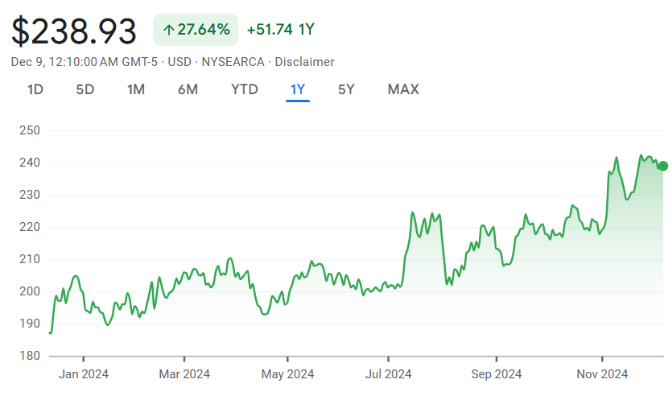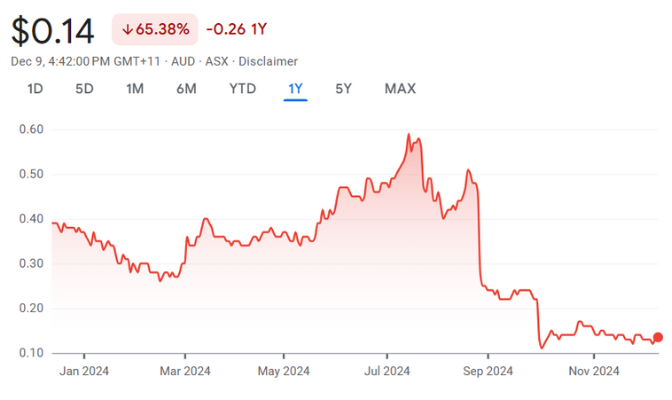Small-cap index funds have become increasingly popular in the ever-changing world of investing, particularly for individuals looking to gain exposure to high-growth companies with smaller market capitalizations. Through these funds, investors can tap into the potential of small-cap stocks, which historically have outperformed large caps during times of economic expansion. Several small-cap index funds stand out for 2024 because they combine low expenses, good growth potential, and diversification.
What Are Small Cap Index Funds?
A small-cap index fund tracks a specific market index composed of companies with smaller market capitalizations, typically between $300 million and $2 billion. By investing in these funds, individuals can spread their risk and potentially earn higher returns over time. These funds aim to mirror the performance of smaller companies in the stock market, focusing on growth stocks and small caps. They connect you with companies that may not be widely known but have significant potential. Like small trees that can grow into tall and sturdy ones, small-cap companies have ample room to grow, potentially leading to substantial profits for investors.
Why Are Small Cap Index Funds So Popular with Investors?
Small-cap index funds are popular among investors for two main reasons: diversification and growth potential. Particularly in times of economic recovery, small-cap stocks tend to be more nimble and sensitive to market movements. In previous bull markets, small-cap stocks have performed better than large-cap stocks, offering higher returns to investors willing to assume more risk.
Furthermore, small-cap index funds provide exposure to markets and industries that might be underrepresented in broader indices such as the S&P 500. Including this diversity can be a crucial element of a well-balanced portfolio. These funds are also often less expensive than actively managed funds, making them a popular option for cost-conscious investors aiming to optimize their long-term total return.
Get the Latest Stock Market Insights for Free with
Stocks Down Under & Pitt Street Research
Join our newsletter and receive exclusive insights, market trends, investment tips, and updates delivered directly to your inbox. Don't miss out – subscribe today and make informed investment decisions.
What to Know Before Investing in Small Cap Index Funds
Assessing Your Risk Tolerance
Before you invest in small-cap index funds, you need to determine if you have a high or low risk tolerance. These funds are inherently more volatile than those specializing in large-cap and mid-cap stocks. Small-cap companies are usually in the growth phase, and their stock prices may fluctuate dramatically. This volatility can be both a risk and an opportunity because small-cap stocks can produce significant returns but can also result in substantial losses.
For investors with a longer investment horizon and high risk tolerance, small-cap funds can be a great means to find market growth opportunities. It might be wise to offset some of this volatility by balancing small-cap investments with large-cap or mid-cap investments to stem potential fluctuations.
Evaluating Fund Performance and Fees
You should consider both the historical performance and the fees attached to small-cap index funds. Although past performance does not guarantee future results, it can reveal how well the fund has handled various market conditions. Reviewing annualized returns, benchmark index comparisons, and the fund's performance relative to its Morningstar category are important metrics.
The fund's expense ratio is another crucial consideration. Selecting funds with lower costs is important because higher fees can gradually reduce your returns. For example, the Schwab U.S. Small-Cap ETF (SCHA) has an expense ratio of just 0.04%, making small-cap exchange-traded funds (ETFs) an affordable option for long-term investors.
Top 2 Small Cap Index Funds in the US

iShares Russell 2000 ETF (IWM)
The iShares Russell 2000 ETF (IWM) tracks the Russell 2000 Index, providing exposure to a broad range of small-cap U.S. companies across various sectors. By holding a sizeable portion of businesses in diverse industries, it helps balance risk and growth. Emphasizing U.S.-based small-cap companies, this fund is an intelligent choice for long-term growth, especially when the economy is expanding.

Frontier Energy Ltd (ASX:FHE)
Known for its low expenses and broad sector exposure, the Vanguard Small-Cap ETF (VB) tracks the CRSP US Small Cap Index. It is ideal for investments in small-cap stocks, striking a balance between growth and risk. The fund seeks to provide total return by investing in a diversified portfolio of U.S. small-cap companies with high growth potential.
Top 2 Small Cap Index Funds in the US
How to Invest in Small Cap Index Funds
Start by finding small-cap index funds that match your investment plan. Look for funds that have performed well in the past, have low fees, and fit your comfort zone with risks. Resources like Morningstar and fund prospectuses can provide important insights about the fund holdings and sector allocation.
Who Should Consider Investing in Small Cap Index Funds?
For investors looking for growth stocks with an average market capitalization of between $300 million and $2 billion small cap index funds are a great option. These investment funds provide a valuable diversification to an investment portfolio by focusing on small cap companies that are poised for expansion. Small cap index fund expose investors to businesses with strong growth potential because they typically outperform large caps in small cap stocks during economic recoveries. However, since these companies fund holdings are frequently more volatile this is a better choice for investors who can tolerate more risk.
Investors comfortable with fluctuating market conditions and willing to endure short-term volatility for potential long-term rewards are the best fit for small cap funds. Small caps can outperform mid cap stocks and large cap stocks, particularly when tracking a reliable benchmark index. However, these funds are not ideal for conservative investors focused on income stability. Always consider the past performance and costs associated with the fund, particularly the expenses and management fees that can affect the overall total return.
Is Now a Good Time to Invest in Small Cap Index Funds?
Now might be a good time to put money into small cap index funds, current market conditions being what they are. As we move past the U.S. economy shows signs of recovery and small cap stocks tend to be more nimble and adaptable to changing market environments, small cap stocks have the potential to outperform.
Small caps historically lead with strong returns in economic expansions by their smaller size allowing them to grow rapidly in a favorable market environment. Despite this, you must look at market volatility and country-specific restrictions that may impact the performance of some small cap funds. Just like stock campaigns that can be split, people should be able to invest with a long term horizon and be prepared for some short term fluctuations in the stock markets.
FAQs on Investing in Small Cap Index Funds
Index funds are investment funds designed to replicate the performance of a specific benchmark index, such as the Russell 2000 or S&P 500. Through these funds, you have a low-cost way to invest in a diversified portfolio of stocks, achieving market exposure without selecting individual securities.
Our Analysis on Small Cap Index Funds
Cochlear (ASX:COH) is still a long term growth story you should listen to
Cochlear is one of few stocks that has created immense shareholder value and has also greatly improved the lives of…
So your company just unveiled unaudited results for FY25? Are they accurate and how much weight should I place on them?
It is reporting season soon but unaudited results are being released ahead of that by many companies and some have…
ASX Stocks to buy when interest rates fall: Here are our top 3 sectors
Many investors are asking what ASX Stocks to buy when interest rates fall. When exactly interest rates will fall is…
Why investors are excited about Chalice’s Gonneville/Julimar project once again and if they’re getting ahead of themselves
Chalice Mining (ASX:CHN) shares climbed over 10% yesterday after an announcement declaring a ‘major metallurgical breakthrough at Gonneville’. Investors liked…
Here’s why value investing went out of vogue and if investors will ever bother with it again
‘Value investing is dead!’ many have proclaimed. This is not entirely accurate, but there is little doubt that the strategy…
6 of the best places to get Stock Market Information from in Australia!
6 of the best places to get Stock Market Information from in Australia! The ASX website Yes this is obvious,…





